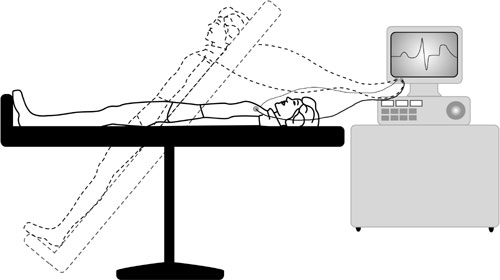Tilt-table testing is used to identify other common conditions that can cause blackouts – such as Vasovagal Syndrome (see technical terms) or simple fainting – that tend to particularly affect young women and girls but have a very low risk of causing sudden death.
These symptoms are very similar to the symptoms of more rare and potentially life-threatening conditions like the channelopathies, so it is important to discover the cause of the blackouts so that the doctor can give appropriate treatment. While you lie flat on a table, your blood pressure, pulse and ECG are monitored. The table is then tilted to an angle of 60 to 75 degrees and monitoring is continued. If nothing happens, a spray of a substance called GTN is given under your tongue as a stimulus and you will be monitored for another 10-15 minutes.
The table will then be returned to the flat position and the leads disconnected. The whole test takes around 45 minutes. If your blood pressure falls at the same time as you suffer your usual symptoms, this means that you have Vasovagal Syndrome or a related condition.
Tilt-table testing

Figure 8: The tilt table test
The tilt table test involves monitoring the ECG, pulse and blood pressure while you are lying flat on a table, then when the table is tilted to 60-75 degrees, and then lying flat again.